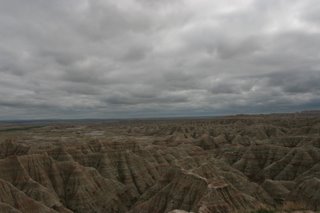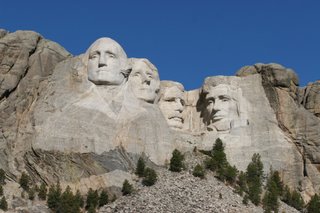Day 4 – Wednesday, October 4

The next day we continued on and in Mitchell, SD we stopped for a visit to the Corn Palace, a building decorated with murals and designs made from corn and other grains. Each year the exterior decorations are completely stripped down and new murals, designed by local artists, are created using thousands of bushels of corn, grain, grasses, wild oats, brome grass, blue grass, rye, straw and wheat. In addition to being a local tourist attraction, the Corn Palace also serves the local community as a venue for concerts, sports events, exhibits and other community events. We also visited Mitchell Prehistoric Indian Village, a National Historic Landmark and an archeological site, which more than a thousand years ago was a thriving Native American village. In the Boehnen Museum we saw a number of exhibits including pottery, tools, spear points and a fully reconstructed earth lodge, one of nearly 70 believed to be buried at the site. Particularly interesting was the Thomsen Center Archeodome, which covers the open archeology dig, encloses two full lodges on its exposed earthen floor and is open to the public. In the gift shop I was tempted by many unique pieces of art and crafts made by South Dakota Native artists and indulged myself with a beautiful silver and turquoise dream catcher necklace.
Sometime later we arrived at Badlands National Park located in southwestern South Dakota. The Park consists of nearly 244,000 acres of sharply eroded buttes, pinnacles and spires blended with the largest, protected mixed grass prairie in the United States. In spite of their uninviting name, these unusual landforms are a masterpiece of water and wind sculpture. Unusual shapes are etched into a plateau of soft sediments and volcanic ash, revealing colorful bands of flat-lying strata. The stratification adds immeasurably to the beauty of each scene, binding together all of its diverse parts. Viewed horizontally, individual beds are traceable from pinnacle to pinnacle, mound to mound, ridge to ridge, across the intervening ravines. Viewed from above, the bands curve in and out of the valley like contour lines on a topographic map. A geologic story is written in the rocks of Badlands National Park, every bit as fascinating and colorful as their outward appearance. It is an account of 75 million years of accumulation with intermittent periods of erosion. Over 11,000 years of human history pales to the eons old paleontological resources. Badlands National Park contains the world's richest Oligocene epoch fossil beds, dating 23 to 35 million years old. The evolution of mammal species such as the horse, sheep, rhinoceros and pig can be studied in the Badlands formations.
Late in the evening we arrived at our last destination in South Dakota, the base of Mt. Rushmore National Memorial. On the way we crossed into the Mountain Time Zone and gained another hour but decided to turn in for the night in the nearby Keystone, SD and visit the monument early next morning. Mt. Rushmore, a United States Presidential Memorial also known as America’s Shrine to Democracy, represents the first 150 years of the history of the United States of America with the 60-foot sculptures of former U.S. Presidents George Washington, Thomas Jefferson, Theodore Roosevelt, and Abraham Lincoln. The entire memorial covers 1,278 acres and is 5,725 feet above sea level. The memorial attracts around 2 million people annually. Sculptor Gutzon Borglum chose this mountain due to its height, the soft grainy consistency of the granite, and the fact that it catches the sun for the greatest part of the day. The presidents were selected on the basis of what each symbolized: George Washington represents the struggle for independence, Thomas Jefferson the idea of government by the people, Abraham Lincoln for his ideas on equality and the permanent union of the states, and Theodore Roosevelt for the 20th century role of the United States in world affairs. On the one had this is quite a feat of engineering but as much as I was amazed by its size I could not shake the feeling that on the other hand, this is also an example of supremely arrogant human behavior, for one to choose to permanently scar a beautiful, sacred natural place and blast off an entire side of lush wood covered mountain only to carve into it the likings of its leaders for the purpose of political and nationalistic propaganda. Coupled with the less popular and well know facts, including that sculptor Borglum was a member of the Ku Klux Klan and prior to this project was involved in sculpting a massive bas-relief memorial to Confederate Leaders on Stone Mountain in Georgia. And more importantly, that Mt. Rushmore, sacred to the Lakota and known as Six Grandfathers, is controversial among Native Americans because the United States seized the area from the Lakota tribe after the Black Hills War in 1876–77 in spite of the fact that the Treaty of Fort Laramie (1868) had previously granted the Black Hills to the Lakota in perpetuity.


0 Comments:
Post a Comment
<< Home